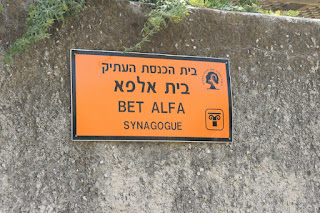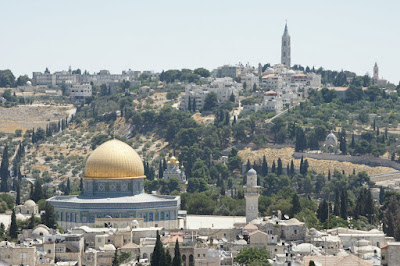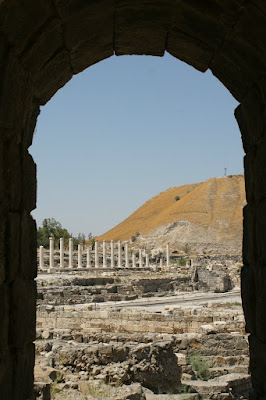I beseech you, O my good God, to be my life, my ship and my haven. You have placed me on the cross of your Son and I am trying to accustom myself to it as best I can. I am convinced that I shall never come down from that Cross and that I shall never again see a clear sky.
I am convinced that I must speak to you in the midst of thunder and hurricanes, that I should see you in the burning bush, amid the fire of tribulations, but to do all this I see that it is necessary to take off one’s shoes and give up entirely one’s own will and affections.
I am ready for everything, but shall I see you one day on Tabor, in the holy sunset? Shall I have the strength to ascend without growing weary to the heavenly vision of my Savior?
I feel the ground on which I tread giving way beneath my feet. Who is to strengthen my steps if not you who are the staff of my weakness? Have mercy on me, O God, have mercy on me! Do not make me feel my weakness any longer!
May your faith once more enlighten my intellect, may your charity warm this heart of mine which is crushed by the fear of offending you in the hour of trial!
Dear God! How painful is this awful thought which never leaves me for a moment! My God, my God! Do not oblige me to suffer agonies for you any longer! I am unable to bear it any more!
(--Letter to Padre Benedetto, Nov 8, 1916)
 Oh, where are the happy days of my life when my most sweet Good was with me and dwelt in my heart? To live is wearisome to me: allow me, dear God, the freedom to complain in my affliction of heart! O most merciful Father, do not now remember the sins of my youth which you had already forgotten. Ah, my God, allow me to weep over my wickedness! Much better for me would it have been had I died in my mother’s womb before any eye had seen me.
Oh, where are the happy days of my life when my most sweet Good was with me and dwelt in my heart? To live is wearisome to me: allow me, dear God, the freedom to complain in my affliction of heart! O most merciful Father, do not now remember the sins of my youth which you had already forgotten. Ah, my God, allow me to weep over my wickedness! Much better for me would it have been had I died in my mother’s womb before any eye had seen me.(--Letter to Padre Agostino, May 27, 1914)
O life, how cruel you are to me! How long you are! O life, no longer life to me but torment! O death, I do not know who can fear you, for through you life begins!
(--Letter to Padre Benedetto, Jul 7, 1913)
O my God, delightful repose of those who love you, grant at last this rest to a heart enamoured of your beauty, to a heart that lives for one purpose alone, for you alone will and can reduce the torment of a soul that is wasting away from the desire to be united with you forever.
(--Letter to Padre Agostino, Sep 4, 1915)
 O Good of my soul, where are you? Where have you hidden yourself? Where can I find you again? Where am I to look for you? Don’t you see, O Jesus, that my soul wants to feel you at all costs? I seek you everywhere but you do not permit yourself to be found….
O Good of my soul, where are you? Where have you hidden yourself? Where can I find you again? Where am I to look for you? Don’t you see, O Jesus, that my soul wants to feel you at all costs? I seek you everywhere but you do not permit yourself to be found….(--Letter to Padre Benedetto, Oct 17, 1918)
My supreme Good, where are you? I no longer know you or find you, but I must necessarily seek you, you who are the life of my dying soul. My God, my God! –I can no longer say anything else to you—why have you forsaken me? I am aware of nothing but this abandonment, I am ignorant of all else, even of life, which I am unaware of living.
(--Letter to Padre Benedetto, Jun 4, 1918)
O God, the King of my heart, the only Source of all my happiness, how much longer must I wait before I can openly enjoy your ineffable beauty? You pierce my heart with the arrows of your love; you are that cruel One who opens deep wounds in my heart although they cannot be perceived; you kill me without taking any care to raise me up again in your own heavenly abode!
What comfort will you offer to this soul which finds no consolation here below and can have no peace while far from you?
(--Letter to Padre Agostino, Sep 25, 1915)

Praise be to God who does not leave for long without comfort those who hope and abandon themselves in him.
(--Letter to Padre Agostino, Sep 1, 1916)

(--Letter to Padre Agostino, Nov 19, 1916)
For those who are interested, I have a new pamphlet now available from Liguori Publications: Advent Meditations With Saint Pio of Pietrelcina. Here's the link to the publisher's listing: http://www.liguori.org/productdetails.cfm?PC=11117 .


 The central section of the mosaic is a depiction of the Zodiac, with the symbols of each of the months and their names in Aramaic and Hebrew. One can still see the two fish for Pisces, the scorpion for Scorpio, the bull for Taurus, and so forth. In the center of the Zodiac circle is Helios, the sun god, mounted in a chariot drawn by four horses. Outside the circle, at each corner of the compass, is a woman representing one of the seasons.
The central section of the mosaic is a depiction of the Zodiac, with the symbols of each of the months and their names in Aramaic and Hebrew. One can still see the two fish for Pisces, the scorpion for Scorpio, the bull for Taurus, and so forth. In the center of the Zodiac circle is Helios, the sun god, mounted in a chariot drawn by four horses. Outside the circle, at each corner of the compass, is a woman representing one of the seasons.














 We could see the mosques from the Garden of Gethsemane area (again, these photos were taken with a zoom lens, and enlarged by means of the computer):
We could see the mosques from the Garden of Gethsemane area (again, these photos were taken with a zoom lens, and enlarged by means of the computer):

 And from the Citadel (the Tower of David), adjacent to the Jaffa Gate (the Garden of Gethsemane area is in the background, just below the Orthodox church with the onion domes):
And from the Citadel (the Tower of David), adjacent to the Jaffa Gate (the Garden of Gethsemane area is in the background, just below the Orthodox church with the onion domes):







 When I took these photos in 1983, I was not using a zoom lens, and I did not enlarge these shots on the computer.
When I took these photos in 1983, I was not using a zoom lens, and I did not enlarge these shots on the computer. The colors of my photos have faded a bit in 25 years, but one can still see how spectacular these buildings are.
The colors of my photos have faded a bit in 25 years, but one can still see how spectacular these buildings are.

































